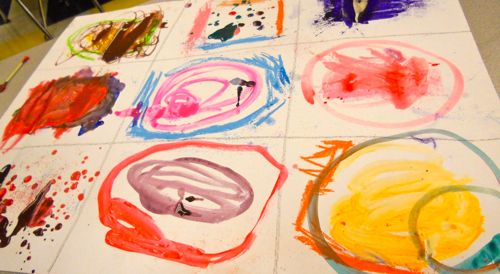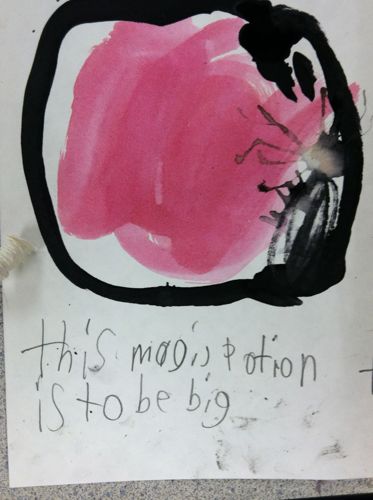Contemporary art plays an important role in the elementary art room.
Sharing contemporary art is a wonderful way to generate questions and discussions about art, and in turn, motivate young artists to take risks with their own art making. You might be wondering- what does contemporary art look like in the elementary art room? It starts with introducing images of contemporary art that immediately catch the attention of our students. Sharing work, such as Lynda Benglis’ Blatt, is enough to morph a group of young artists into inquisitive minds that have many questions, reactions, and feelings about what they are seeing.
As teachers, contemporary art motivates and guides us as we brainstorm and discuss the development of artistic experiences for our students. An important goal of ours is to assist them in developing the confidence and skills required to start thinking and behaving as artists. We want to guide our students with experiences that provide opportunities for them to make choices and experiment with materials. To that end, it is often the working processes of contemporary artists that inspire many of the art experiences we design.
Sharing contemporary art with young students is all about asking questions. A combination of contemporary images mixed with a healthy dose of imagination helps us to create an art making experience that gives our students confidence. It also provides us avenues to tie in student interests with meaningful art lessons.
We are consistently amazed at how enthralled our second graders are with their water buckets when they rinse their paintbrushes. Through their eyes, they are mixing a variety of ever-changing magical potions. Sometimes their interest with these “potions” surpasses the painting experience itself. We wanted to harness that excitement with an art lesson that also shared Lynda Benglis’ blobs as a starting point for conversation. We asked our students to imagine what her blobs could be. If these were spilled magic potions what would these potions do? What are they made of? What would happen if it spilled on your hand? What if it was spilling into the art room?
After imagining several possibilities of what their potions could be, our students created their own collections of magic potions by experimenting with water, paint, chalk, etc. We asked our students to imagine the ingredients they used to concoct their potions. Dragon’s blood? Dust from Mars? Orange Juice? And what powers might these potions have? Can they turn you into a robot? Send you into another dimension? Make your favorite food appear? Our students also made books that showcased their collections and explained how their potions were made.
Our students are the contemporary artists in our art rooms. Because of this, when sharing contemporary art with our young students, our discussions emphasize the act of making art rather than the finished product. In this case, Benglis’ blobs were used as a springboard for a student-driven discussion about art and imagination that led to an active and engaging art-making experience for our students. Providing experiences like these will encourage our students to use their imaginations and experiment with art making techniques. As our second graders actively participate in playful contemporary art-rooted experiences, they are developing into young, confident and proud artists.






Pingback: Magic Potions with Elementary 1 | Art with Mrs. Bolt